I usually don’t write much about tents. I’m not a tent guy. I don’t have or use many tents, and it’s hard for me to offer you any side by side comparisons. In all of my years camping, here are all the shelters I have used in that order: Kelty Gunnison 2 tent, DD 3m x 3m tarp, GoLite Shangri-La 5, GoLite SHangri-La 3, and now the Mountain Hardwear Direkt 2 tent. I have now been using the Direkt 2 tent for over a year, and wanted to give you some of my reasoning for choosing the tent, and my experience with it.
Before I get into any details, I think it would be fair to acknowledge that the Mountain Hardwear Direkt 2 tent is designed as a pure mountaineering bivi tent. It is tiny, it is light, and it is designed to function in extreme conditions. It does not give much thought to comfort, space, or ease of use. In that respect, i.e. as a mountaineering tent, it has already secured its place and proven to be a good tent. There isn’t much I can tell you about the tent in that capacity that others have not already demonstrated much better.
In the above picture you see Ueli Steck using the Direkt 2, the tent he carried on his solo summit of Annapurna. In fact the tent was designed by Mountain Hardwear specifically for the task. So, that’s the end of my review of the Direkt 2 as a mountaineering tent. If it’s good enough for The Swiss Machine, it’s good enough for me.
My review of the tent however is not over. That’s because I wasn’t looking for a dedicated mountaineering tent, I was looking for a ultralight four season free standing tent for year round use. In this review I want to look at the Mountain Hardwear Direkt 2 tent from exactly that perspective and share my experiences with it.
For quite some time I was very happy with the GoLite Shangri-La 3. In fact, I’m still happy with it, and I still own one. I love the room and open floor space, as well as the very low weight and volume. However, I decided to start looking for a similarly light four season free standing tent with a small footprint. The reason was that despite all of the benefits of the Shangri-La 3, it’s large foot print and need to be staked securely made it challenging to pitch under some circumstances. A small free standing tent offered the solution. This tent however would still have to be capable of year round use, and offer certain amount of livability when in the woods, at least by my standards.
When we factor in the above characteristics, i.e. light weight, small footprint, four season use, and free standing, the field very quickly gets limited to single wall mountaineering tents, particularly those used in alpines style climbing. I knew of the Mountain Hardwear Direkt 2, so that was an immediate contender. I also knew of the Black Diamond Firstlight, and some additional research lead me to the Rab Latok. Here is how they stack up:
| Tent | Direkt 2 | Firstlight | Latok |
| Tent Fabric | 30D PU coated nylon | NanoShield | 3 layer eVent |
| Weight | 2lb 12oz | 2lb 13oz | 3lb |
| Height | 45in | 42in | 31in |
| Length | 81in | 82in | 87in |
| Width | 45in | 48in | 47in |
| Cost | $550 | $350 | $500 |
The Rab Latok got eliminated first. While I like the eVent construction, it is just too low to the ground. That would be ideal if you have to overnight on the slopes of Everest, but way less than ideal for year round use. I can’t imagine trying to change clothing while in the tent.
It came down to the Direkt 2 and the Firstlight. The Black Diamond Firstlight is a well tested and respected bivi tent, and comes in at a lower cost than the Direkt 2. The reason why I chose the Direkt 2 instead however is that the Firstlight is not truly waterproof. The NanoShield material which comprises the tent body is a proprietary breathable membrane. However, there are plenty of reports of it leaking when saturated with water. This of course isn’t an issue if you are climbing above tree line in freezing temperatures, but for year round use, when I can be trapped in a rain storm for several days, it makes a big difference.
Even though I had made my decision, I held off on buying the tent because of the cost. As luck would have it, it was offered to me for testing,, and later I bought one myself from REI at a sale where it was 50% off. And so, I began testing it. My main concern was lack of space and condensation. In order to be completely waterproof, and at the same time light weight, the shell material is not breathable. Combined with the minimal ventilation of mountaineering tents, it was a real concern.
Let’s look at some details:
Size:
The tent, as expected is small. It is just long enough for me to stretch out. I’m just under 6 feet tall and when stretched out I’m almost touching the two ends of the tent. The tent is just wide enough to fit two sleeping pads (read people) next to each other. Doing that however will leave absolutely no space in the tent. If you are climbing and share a sleeping bag with your partner, that works fine, but otherwise, this is a one person tent.
The tent height is surprisingly good. I have no problem sitting up in it, or even kneeling, an important consideration when trying to use a pee bottle.
Overall I have been very happy with the tent with respect to size. It offers just enough room for one person. I can stretch out in it, I can sit up in it, and it fits all of my gear and leaves room for me to do any prep or repairs to my gear. The only downside when compared to an open floor tent is that cooking inside with a remote canister or white gas stove is very difficult and risky.
Weight and Packability:
The weight of the tent will somewhat depend on what components you bring. I use the tent just with four 8in carbon fiber stakes. Mountain Hardwear lists this minimal weight as 2lb 12oz, but on my scale, including the stuff sacks for the tent and tent poles, the weight was 2lb 11.7oz. The difference probably comes from the after market stakes I use.
If however you expect some serious weather, i.e. high speed winds above tree line, you would want to bring extra lines and stakes to really strap down the tent. In that case the weight will go up slightly.
When it comes to packing it down, the tent is a little bulky, but still very portable.
The tent poles and stakes come in a separate stuff sack. In the above picture you see both the tent poles and tent body next to a Nalgene bottle. I still haven’t figured out exactly how to fold the tent so that it fits well into its stuff sack. In the above picture the sides of the stuff sack can compress a lot more.
Other Features:
The Direkt 2 is a single wall tent. It is pitched with the use of two crossing tent poles which are placed on the inside of the tent. Since it is a free standing tent, no stakes are required, but they make the job easier and make sure the tent doesn’t fly away while empty. The white patch you see in the picture below is snow, not light. The tent is fully enclosed.
A clever system of snaps holds the ends of the tent poles in place. This largely eliminates the risk of puncturing the tent body. The poles are then held onto the tent with Velcro closures. In order to give you a mountaineering tent that can stand up to severe weather while only using two poles, the pole system is extremely stiff. The entire time the poles operate just under breaking capacity in order to provide the required rigidity.
While the system works, and the tent feels solid, actually getting the poles into position is an extreme challenge. After a while you’ll figure out a few tricks which will help you do it, but there is no way to make the process easy (at least one that I have discovered).
The tent has one door, which is held open with a strap, and has zippers along the bottom and side in order to fully secure the door.
Opposite the door, there is a small ventilation flap, the only ventilation point for the tent other than the door. Otherwise the tent is completely sealed.
The vent is covered by mosquito netting and can be zipped closed. If you need to get any more serious ventilation going, you have to unzip the top of the door, which provides a similar vent point. If you are in the tent with another person cooking, one person can breathe through this vent while the other breathes through the door opening.
Under the vent is a small removable mesh pocket. It is not much use, so I removed it on my tent. There are no other storage compartments in the tent.
Livability:
Overall, the tent has been great for my purposes. It is exactly what I was looking for. It is relatively light, and very light for a free standing four season tent. It has a small footprint, but is large enough for me to use it comfortably.
The big surprise for me was the lack of condensation. I was expecting to be drenched in water after every use of the tent, but a year into using it in just about every imaginable weather, I have not experienced any noticeable condensation. I always keep the ventilation flap open, and I imagine I have gotten very lucky, but so far I have not had any condensation in the tent. That is pretty spectacular for a single wall bivi tent.
Even though I have not had any condensation, the tent provides a surprising amount of warmth. The space is small and enclosed enough that it definitely provides for some dead air space. With the wind completely shut out, sleeping in the tent has been very comfortable.
As designed, the tent is minimal in every aspect. Even the one tiny storage compartment is removable. Everything else is pure function.
There is a surprising amount of light that comes into the tent, largely through the transparent material where the tent poles are held in place. The orange color is pleasant when in the tent, although when you come out of it the world seems a bit bland from a color perspective.
The one and only downside I have experienced with the Mountain Hardwear Direkt 2 tent is the pole system. It is just too hard to pitch. I can not imagine successfully doing it with frozen fingers. I understand that this is due to the requirements put on the system. It is very hard to make a mountaineering tent using just two poles, and as a result they need to be pushed to the limit. I don’t see a good solution to it, but it is problematic.
Less of a problem, and more of a preference issue, I don’t like that my ability to cook inside the tent is limited. It can be done, but you either need a canister mounted stove, a platform, or a hanging stove in order to do it. Sitting in the doorway with the stove just outside is my preferred method, but it is not a good option if the weather is particularly bad. Of course, this is an issue for all fully enclosed tents without vestibules.
Conclusion:
The Mountain Hardwear Direkt 2 is definitely not for everyone. It was designed to be a mountaineering bivi tent, and it excels in that role. If you are searching for comfort or multitude of features, this is not the right tent for you.
If however you are looking for a small, lightweight tent, that has been stripped of anything not absolutely necessary, and are interested in being able to use the tent year round, then the Direkt 2 is worth a look. It has performed very well for me. I have used it from warm Summer nights, to Fall hunting trips, to Winter outings, and it hasn’t let me down.
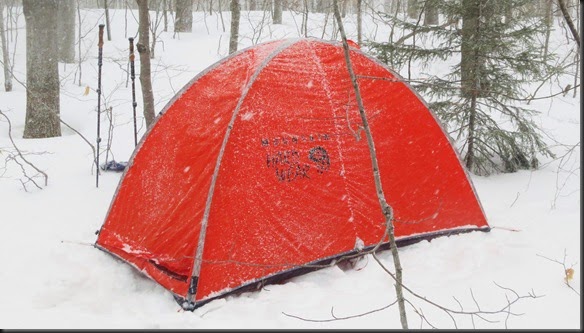
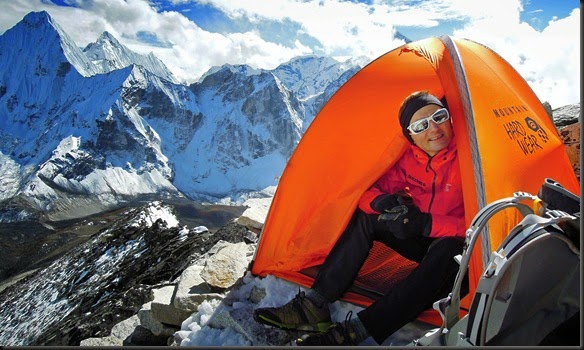

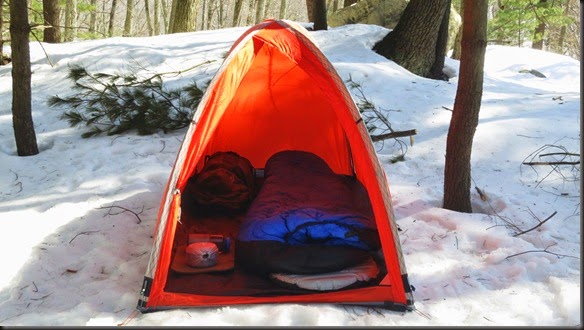
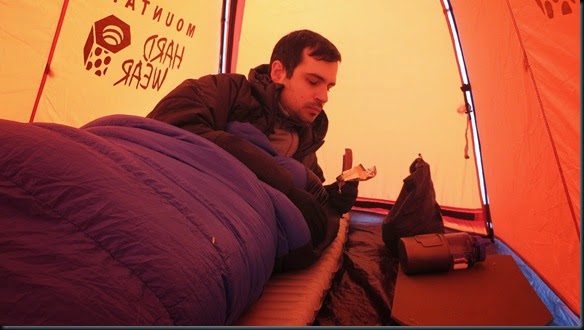
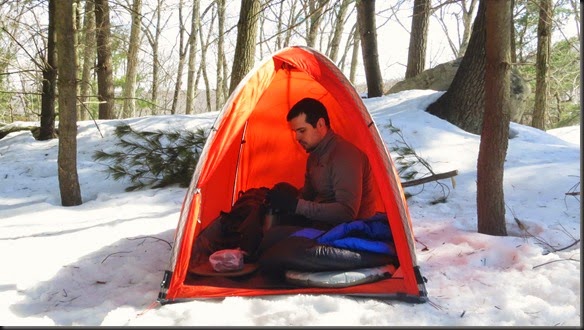
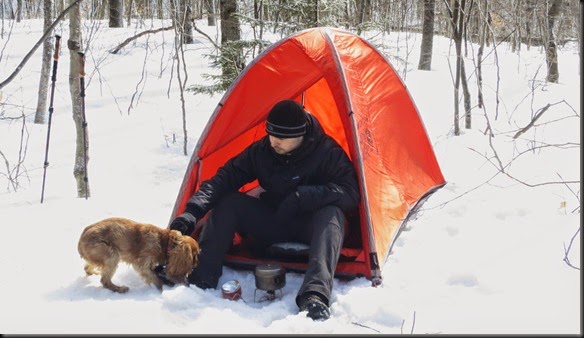
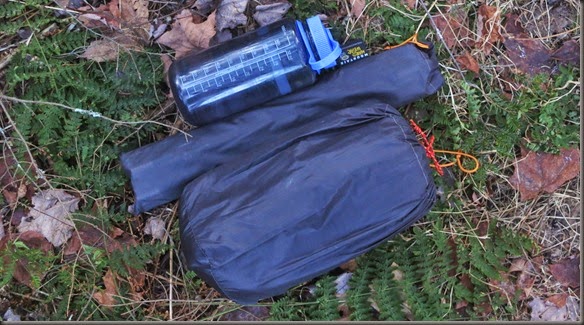
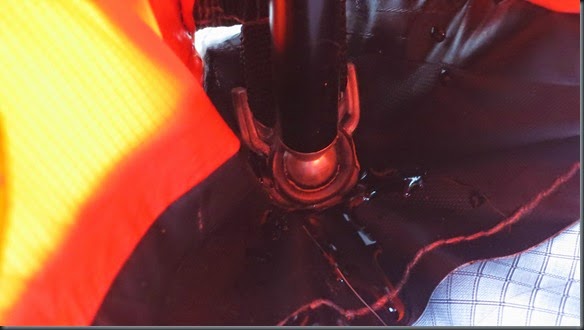
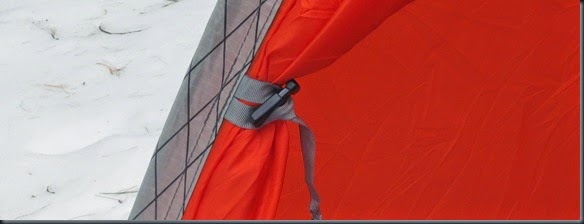
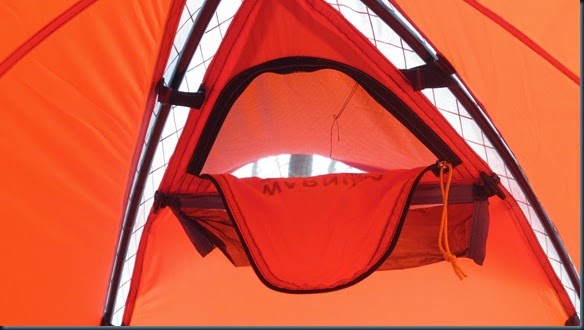
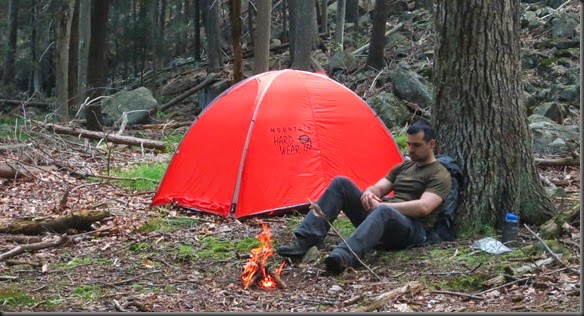
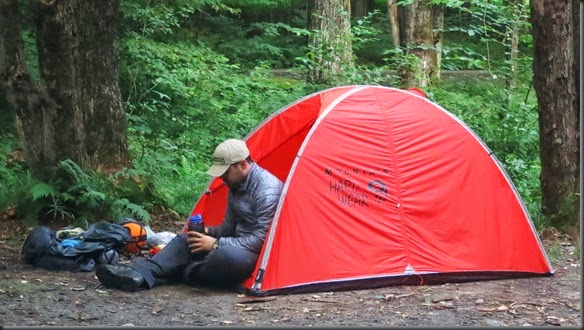
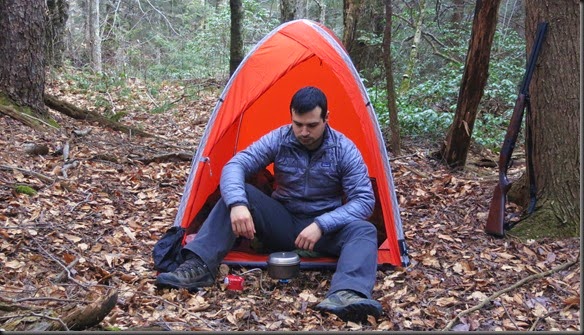
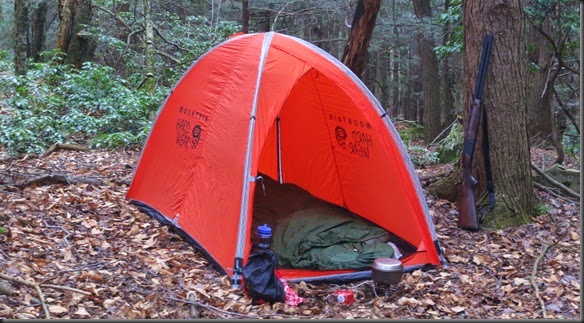
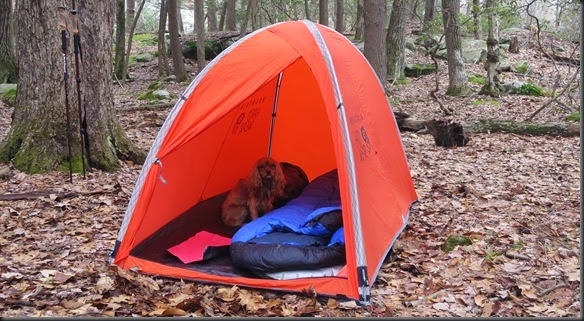

![IMG_0969[3] IMG_0969[3]](http://lh4.ggpht.com/-d3BodBIgDLA/VK_Q99OpNMI/AAAAAAAAOzg/wbCJRJEx2Tw/IMG_09693_thumb1.jpg?imgmax=800)
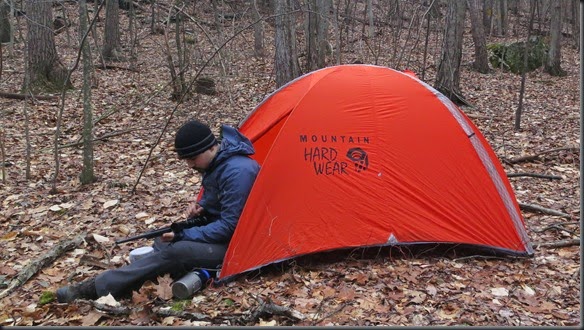
No comments:
Post a Comment